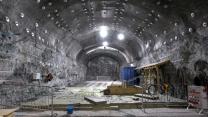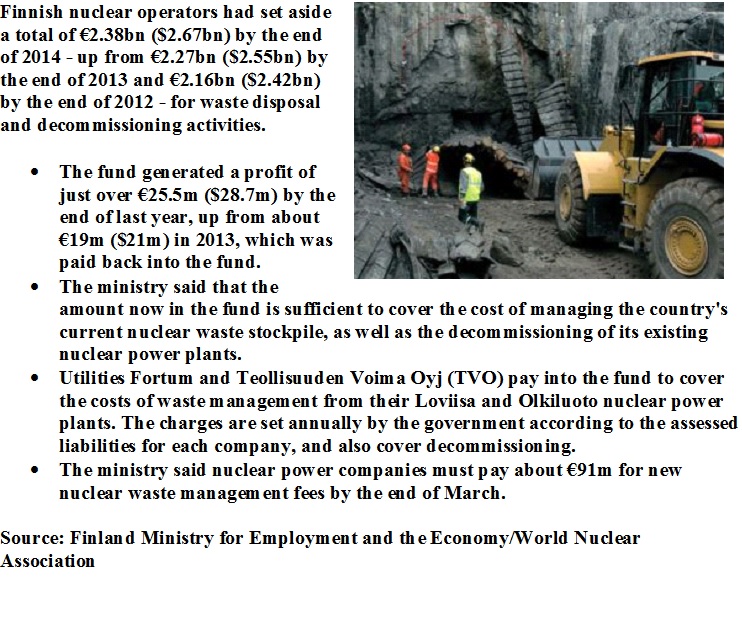Early lessons from Onkalo

As the overseers of the world’s most advanced final repository, Onkalo’s regulators are charting unknown territory… and their early experiences are worth following closely.
The planners of the world’s most advanced final nuclear repository, in Finland, are treading carefully because what they do now has to stay good for at least the next 100,000 years.
And this sense of responsibility is weighing more heavily than ever because the point at which construction will begin in earnest is inching closer.
“Posiva, who is planning the disposal facility for spent nuclear fuel, submitted the construction license application to the Government in 2012,” says Jussi Heinonen, section head for nuclear waste facilities at Säteilyturvakeskus (STUK), the Finnnish radiation and nuclear safety authority.
At the same time as the construction licence application (CLA), Posiva sent STUK “quite extensive and comprehensive documentation about spent fuel encapsulation and disposal facility design and safety,” Heinonen says.
“We have now finalised our review and are finalising the statement and safety evaluation report that will be submitted to the Government."
Construction of the facility is theoretically due to commence this year. But the Finnish authorities are naturally cautious about rushing things at this stage.
STUK in February 2015 gave its backing to Posiva's application to construct a final repository and waste encapsulation plant.
Immense challenge
The immense challenge they face was summed up in a 2010 documentary called Into Eternity, which questioned mankind’s ability to create a structure that could last untouched for hundreds of times longer than anything that has been built so far.
“It is difficult for human beings to understand time spans beyond a few generations, let alone thousands of years,” says the film’s web site.
“To put time into perspective, we need milestones: the human species as we know it today is believed to have existed for approximately 100,000 years. The oldest cave paintings known today are approximately 30,000 years old, the pyramids approximately 4,500 years old.”
“Onkalo and the continuation of disposal facility construction are the first of this type of facilities and there is very little experience where to learn,” accepts Heinonen.
“We are going to move forward in step-wise manner, but still it is a challenge to decide what is needed before authorisation of construction can be given and what parts can be developed further later.”
Until now, Onkalo, which means ‘cave’ in Finnish, has been acting as an underground rock characterisation facility. When the construction licence is granted the plan is to complete an existing tunnel network down to a depth of up to 450 metres.
Final disposal
“The principle behind the final disposal is to use multiple release barriers that help to ensure that no nuclear waste will be released to living nature or is accessible to people,” says Posiva on its web site.
Finnish authorities are planning to dispose of spent fuel using a technique developed by the Swedish Nuclear Fuel and Waste Management Company (Svensk Kärnbränslehantering AB or SKB).
It involves first putting the fuel into 2,800 copper-coated nodular graphite cast-iron canisters then sealing these in tightly compressed bentonite clay. After that the tunnels will be backfilled with clay blocks and pellets.
The Onkalo site was selected for having migmatitic gneiss bedrock that is up to 1,900 million years old. Despite this apparent stability, the SKB technique is designed to allow for potential stresses and strains.
In addition, Heinonen comments: “Posiva has been developing the approach for assuring that post-closure safety-related issues are taken care of, and at the same time Posiva's organisation has been learning about managing construction activities of a nuclear facility.
“Of course there have been things that could have been done differently or partly better, but overall the construction of Onkalo has been done according to the requirements and Posiva has gained large amount of information that has been used in the construction license application.”
Other regulators
STUK is keen to encourage other regulators to learn from this experience, since keeping spent fuel out of the environment for hundreds of thousands of years is not just a task for the Finnish authorities.
“After the experience we have gained from CLA review, I believe we would be interested to discuss with others the review approach we took and how to develop that further,” Heinonen says. “In nuclear waste disposal we quite often focus mainly on post-closure safety.
“Looking now back to the pre-CLA phase, we should have been turning more attention also to facility operational safety and design. I think it would have made CLA review easier. Even though operational safety is simpler than in nuclear power plants, it is not a trivial issue.”
SKB, for one, is keeping a close eye on proceedings so that it can apply the lessons learned to spent nuclear fuel disposal in Sweden.
Simon Roth, of SKB’s Communication Department, says: “The application process is a little bit different in Finland than it is in Sweden, but we have more and more cooperation with Posiva. We have the same method.”

© Nuclear Energy Insider | Terms & Conditions | +44 (0) 207 375 7500 | info@nuclearenergyinsider.com
http://analysis.nuclearenergyinsider.com/decommissioning/early-lessons-onkalo